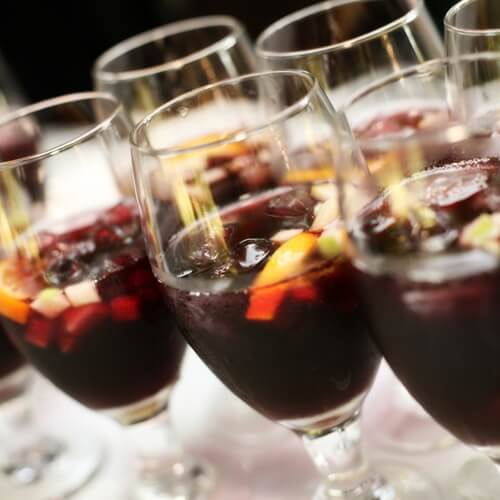Tips For Making The Sweetest Sangria
Originally hailing from both Spain and Portugal, sangria is a beverage that includes chopped fruit, wine and a dash – or maybe even two – of brandy. Though it can be enjoyed any time, this mixture of subtle alcohol and refreshing fruits is an especially appealing choice for summertime gatherings. Still, like many other cocktails, there’s an art to crafting sangria that goes beyond simple chopping and pouring. For the most satisfying sangria possible, here are a few tips and tricks:
The best fruits
In many ways, fruit is the most crucial component to any sangria recipe. As such, it’s all about choosing the right kind, which usually has to do with how well it pairs with the wine. The more popular fruit choices include:
- Raspberries
- Lemons
- Strawberries
- Oranges
- Blueberries
However, always be cautious with how much fruit is added, as too much can adversely effect the flavor. Most recipes call for 1.5 to 2.5 cups of fruit for an averaged sized pitcher. As an extension of this, you’ll want to opt for smaller cuts of fruit, which are usually better for both handling and eating. Plus, cutting fruit can also help bring out more distinctive flavors.
Sweet vs. tart
Sangria should be a balance between more saccharine flavors and those with a noticeable bite of tartness. In order to enhance the former, a lot of recipes will call for a sweetener. Occasionally, though, some of these mix-ins can leave your sangria tasting overly sugary or even syrupy. To avoid that, try to buy different kinds of sweeteners, including sugar, honey, agave, coconut nectar or fruit juice. These will offer that much-needed dash of sugar without overpowering the inherent tartness of many fruits.
Which wine?
When it comes to making sangria, there’s two basic options, red or white wine. For something a bit more specific, The Kitchn offered these five wines as the best for most summer sangrias:
- Primitivo: Also called zinfandel when grown in California. Known for its rich fruit flavor and undertones of spice.
- Garnacha: An especially acidic choice, which makes it a great base for almost any sangria blend.
- Tempranillo: A popular choice for its hue, textures and notes of cola and blackberries.
- Nero d’avola: Chosen mostly for lighter sangrias, and is comparable to a dry rosé.
- Bonarda: Not only is it known for a lush fruit taste, but it’s a markedly cheap variety of wine.
Have another wine you enjoy that’s not on the list? Include it. Personal preference should always be a consideration when making sangria.
A matter of timing
Like so much else in life, making sangria is all about how you coordinate in the kitchen. To begin, you’ll want to let the fruit soak in the wine overnight, as this will help it soften while letting the flavors interact more effectively. From there, as Italian Dessert Recipes noted, the mixture should be allowed to sit at two key intervals, before the brandy is mixed in and before the final addition of sparkling water (added just prior to serving.) Lastly, sangria usually needs more time in the refrigerator – a couple hours will usually do – to maintain better flavoring. To get around this, you can always use chilled wine or serve it over ice.


